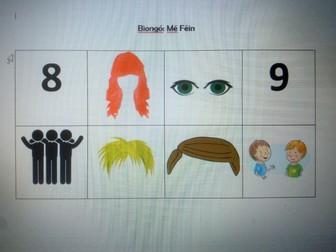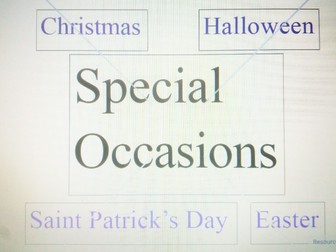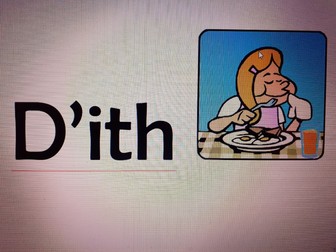Gaeilge: Réamhfhocal 'ag', 'ar', 'as', 'de', 'do', 'faoi', 'le', 'ó',
classes 2nd-6th, ages 8+: Shows how to change each person to the equivalent person in the Réamhfhocal. Can be printed out A3 and used in classroom display for Gaeilge. Can be used as a visual aid when children are 'ag scríobhneoireacht as Gaeilge'. Can be printed out A5 or smaller and given to children to keep in a copy/folder, or made into a booklet, for use at home. The first four persons only can be used for younger classes.


